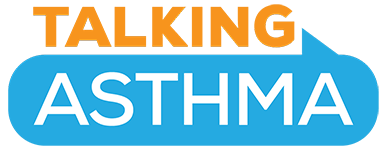Exercised-induced asthma is a narrowing of the airways in the lungs triggered by strenuous exercise. It causes shortness of breath, wheezing, coughing and other symptoms during or after exercise.
The preferred term for this condition is exercise-induced bronchoconstriction (brong-koh-kun-STRIK-shun). This term is more accurate because the exercise induces narrowing of airways (bronchoconstriction) but isn’t a root cause of asthma. Among people with asthma, exercise is likely just one of several factors that may trigger breathing difficulties.
Most people with exercise-induced bronchoconstriction can continue to exercise and remain active by treating the symptoms with common asthma medications and taking preventive measures.
Symptoms
Signs and symptoms of exercise-induced bronchoconstriction may begin during or soon after exercise. These symptoms may last for 60 minutes or longer if left untreated. The signs and symptoms may include:
- Coughing
- Wheezing
- Shortness of breath
- Chest tightness or pain
- Fatigue during exercise
- Poorer than expected athletic performance
- Avoidance of activity (a sign primarily among young children)
When to See a Doctor
See your doctor if you experience any signs or symptoms of exercise-induced bronchoconstriction. A number of conditions can cause similar symptoms, making it important to get a prompt and accurate diagnosis.
Get emergency medical treatment if symptoms are getting worse, such as:
- Shortness of breath or wheezing that is quickly increasing, making it a struggle to breathe
- No improvement even after using a prescription inhaler for asthma attacks
Causes
It’s not clear what causes exercise-induced bronchoconstriction. There may be more than one biological process involved. People with exercise-induced bronchoconstriction have inflammation and may have excess mucus production after strenuous exercise.
Risk factors
Exercise-induced bronchoconstriction is more likely to occur in:
- People with asthma. About 90 percent of people with asthma have exercise-induced bronchoconstriction. However, the condition can occur in people without asthma too.
- Elite athletes. Although anyone can experience exercise-induced bronchoconstriction, it’s more common in high-level athletes.
Factors that may increase the risk of the condition or act as triggers include:
- Cold air
- Dry air
- Air pollution
- Chlorine in swimming pools
- Chemicals used with ice rink resurfacing equipment
- Activities with extended periods of deep breathing, such as long-distance running, swimming, or soccer
Complications
- Exercise-induced bronchoconstriction that is not treated can result in:
- A lack of beneficial exercise
- Poor performance in activities you would otherwise enjoy
- Serious or life-threatening breathing difficulties, particularly among people with poorly managed asthma
Source: https://www.mayoclinic.org/diseases-conditions/exercise-induced-asthma/symptoms-causes/syc-20372300

